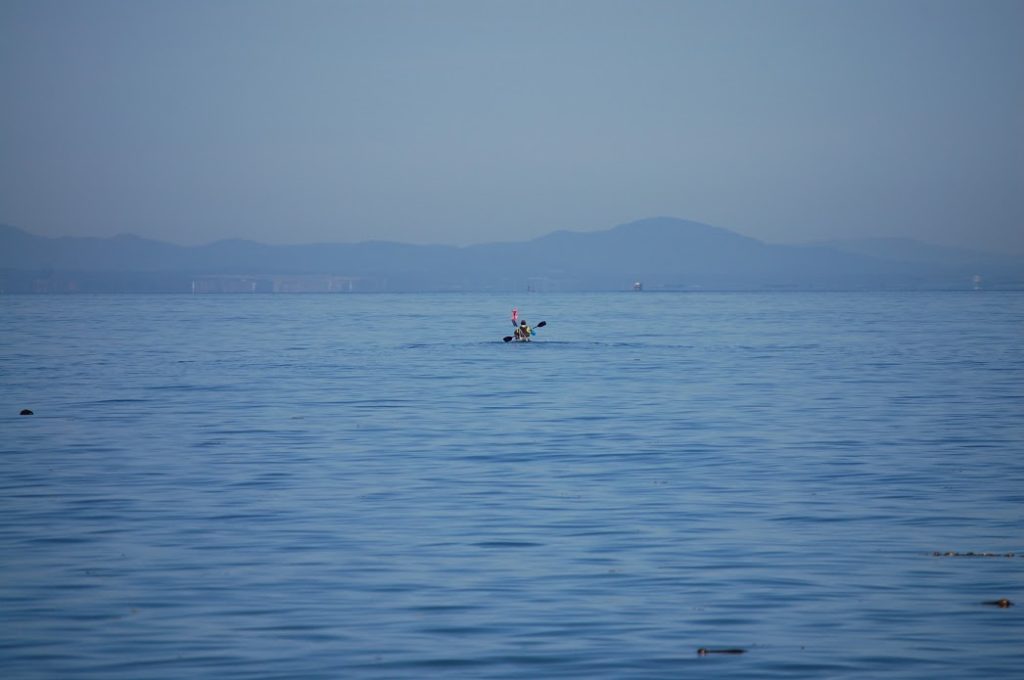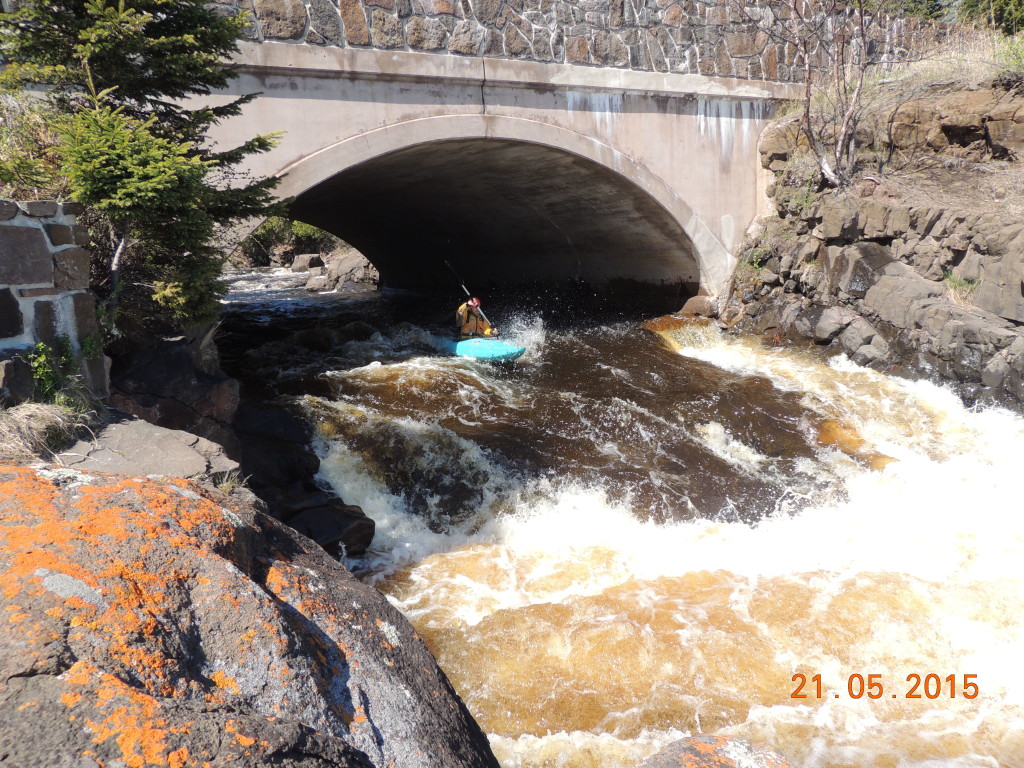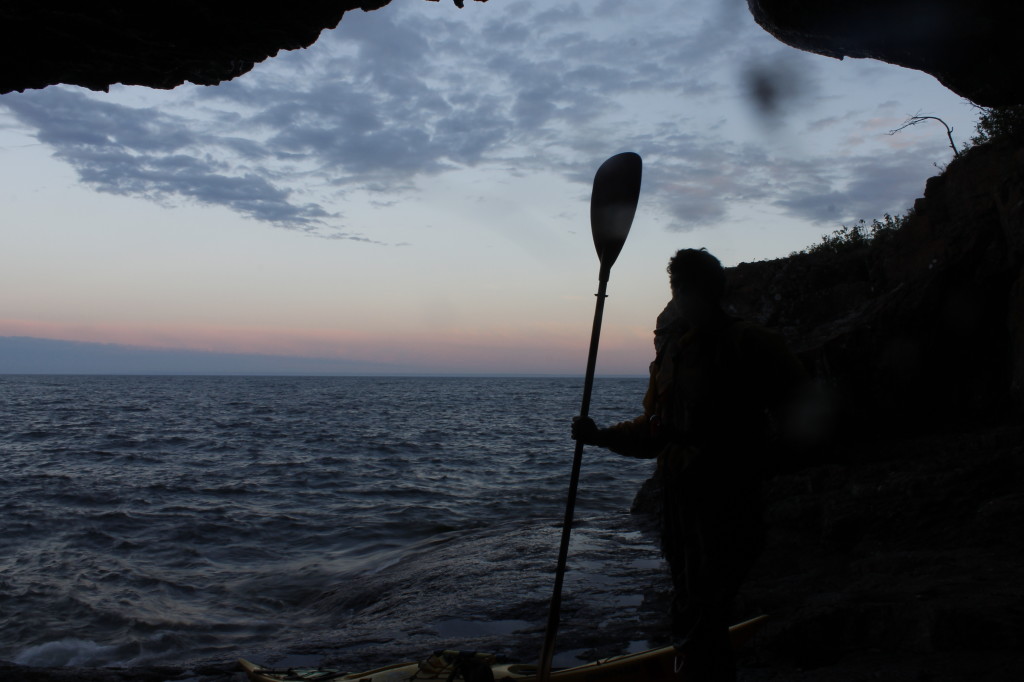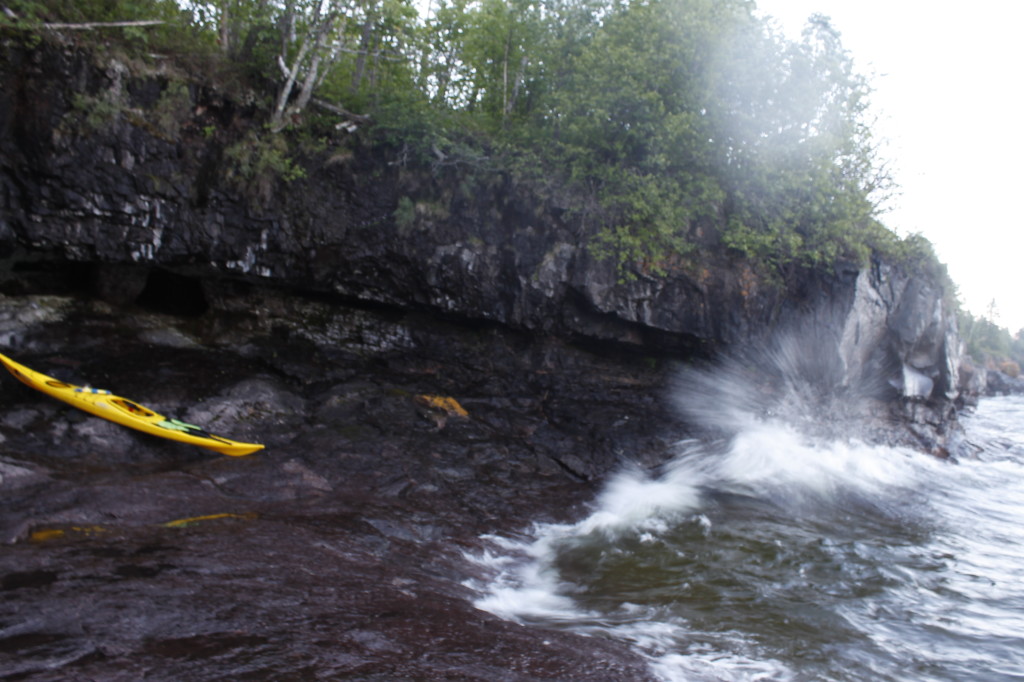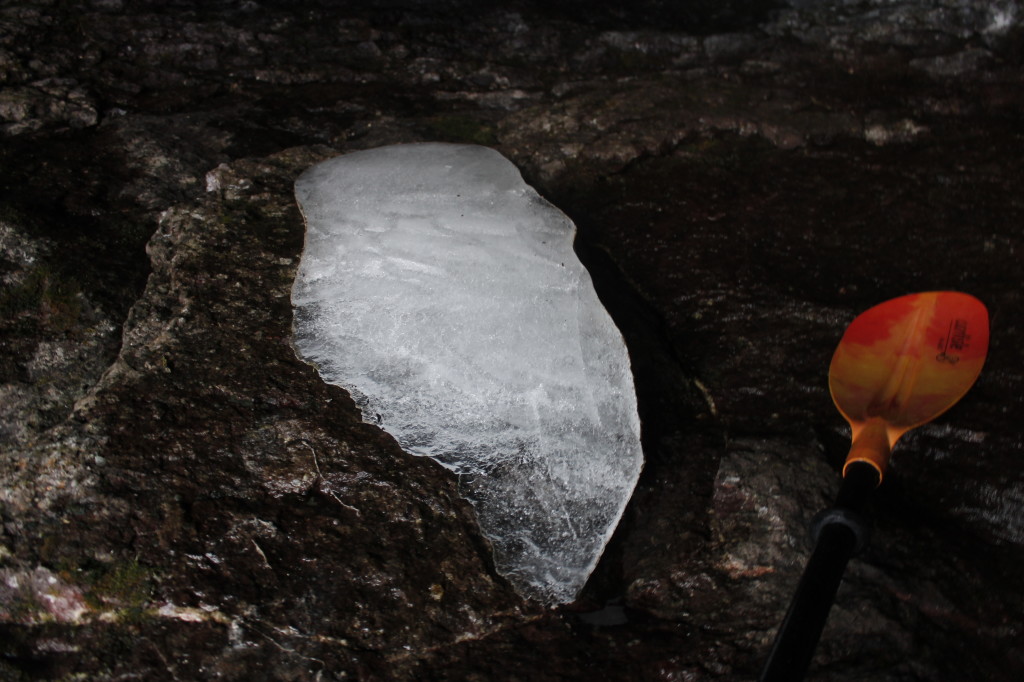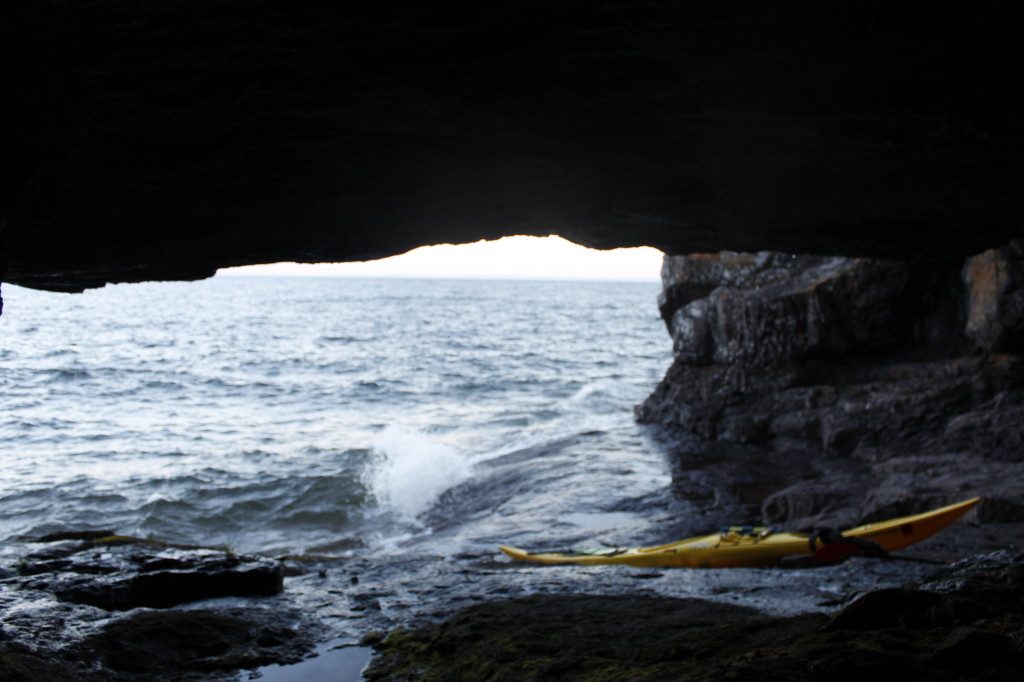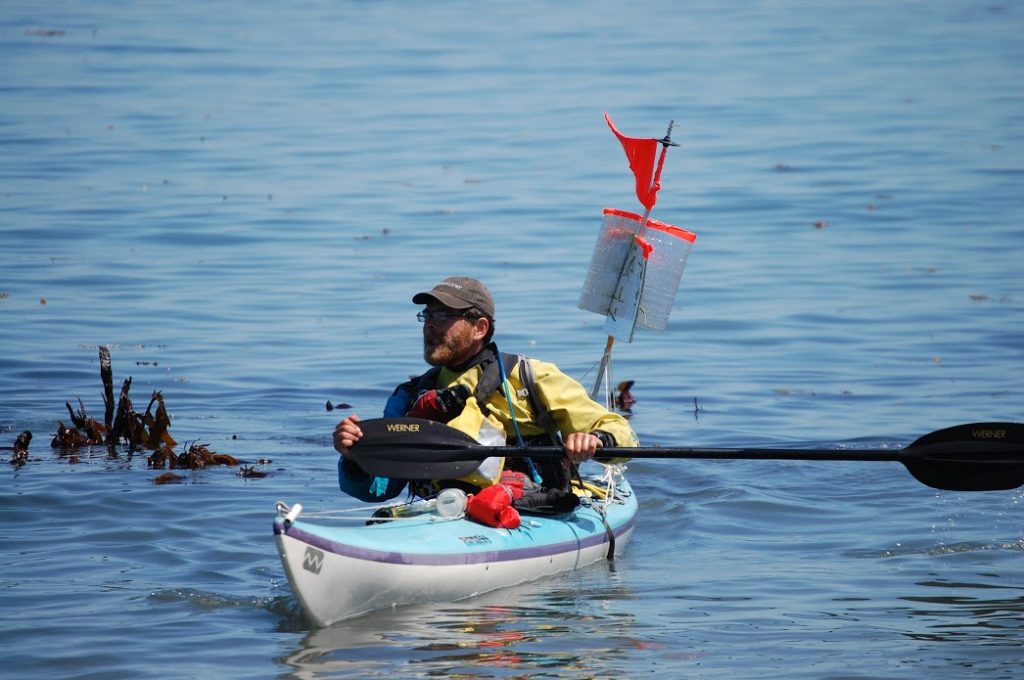
Ah, Victoria. How many nights have I seen your lights shimmer like so many jewels above the dark water?
How many windless days have I squinted over the pale miles in the Strait of Juan de Fuca that lie between — days when I thought I should launch a boat and pay a visit?
How many times have I watched whitecaps rage out of the west, or watched you disappear behind cold fogs — fogs where unseen ships, tall as buildings, moan out warnings?
It has always seemed so easy to get there, yet also impossible.
But I got tired of waiting.
Eventually, I pushed my boat off shore, and put my paddle in the water.
As a straight line journey, it is possible to kayak north from Port Angeles, Washington to Victoria, British Columbia in about 18-miles.
The journey crosses a couple of busy shipping lanes, patrolled by seven story cargo ships, supertankers and cruise ships. The tides go west to east on the flood, and east to west on the ebb, so it is easy to get pushed well off course — not to mention the difficulties of what would happen when a wind picks up. There are plenty of shallow banks out there that create choppy, confused seas.
It wasn’t the distance of the paddle that intimidated me; it was the exposure to hazard, the fact that I would be a long way from shore if something went wrong. But this would only be a training run.
I recently signed up for the first leg of Race To Alaska, a motorless boat race starting in Port Townsend, Washington and ending 40 miles later in Victoria. Competitors who do the full race go all the way to Ketchikan, Alaska.) Even though I was only going only a short fraction of the 750 miles to Ketchikan, it was still a longer open-water crossing than anything I had attempted before. I was nervous about it.
I recently had a dream that I was out there in the middle of the crossing in 15-foot waves breaking around my boat. I remember asking my kayak buddy what the hell we were doing out there.
Dreams are typically inaccurate though. What kayak buddy? I was making the crossing alone.
I stood on Ediz Hook, north of Port Angeles, looking across to Vancouver island, trying to see Victoria out of the smudgy haze. The plan was to let the ebb current carry me to the west. Then at around 1:30 pm the tide would turn around and start carrying me northeast toward Victoria. This course had the advantage of spending less time in a north-south shipping lane, but it brought the total trip distance to 22 miles.
I almost put the kibosh on the whole voyage when I realized that the slack tide (the window where there is no significant current) in the middle of the Strait would be a couple hours later than I’d planned — pushing my departure time toward midday.
The winds were supposed to pick up slightly later in the afternoon. It was nothing near high enough to be a big deal. I would only worry if I happened to be alone in a kayak in the middle of the Strait, miles from land.
In the event of an emergency, I had a new hand-operated bilge pump, a spare paddle, a paddle float (which would help me get back into the cockpit if I got flipped out of the kayak) and some extra warm clothes, stuffed into a dry bag. I was also borrowing a flare gun and a VHF radio that I could use to signal for help if necessary.
My latest creation was a signal flag/radar reflector mounted on the kayak’s back deck. I fashioned it from an old ski pole, orange duct tape and some reflective foam I cut off of a windshield cover. The thing added visibility so ships could see my boat. Kayaks tend to hide out in the crests of waves, concealed to vessel operators and their radar systems. My jury-rigged contraption gave me a better chance of being seen, but also made my boat more vulnerable to wind, and made the prospect of rolling a capsized kayak back upright more dubious. I secured the pole upright with guy-lines attached to the deck cords. There was an awkward lean to the array, but I didn’t spend much time trying to fix it. The tides were going to turn around soon and I needed to hustle.
As I got ready to push the boat into the water, a voice called out, and I was surprised and happy to see my friends Jarrett and Emma coming down the beach to see me off.
“That’s Victoria, over there right?” I asked Jarrett, pointing towards the hazy smudge of land on the other side.
“It hope so” Jarrett said. “You have that new compass on your deck you should use.”
He helped me carry the boat down the last stretch of slimy rocks into the water. Emma took photographs.
I was glad to hear later that my duct tape flag stayed visible long after my kayak faded from sight.
With everything else loaded into the boat, putting myself in it was the last challenge, made more difficult by the seat sliding forward. It took a minute to stuff my leg into the cockpit and to find the pedals.
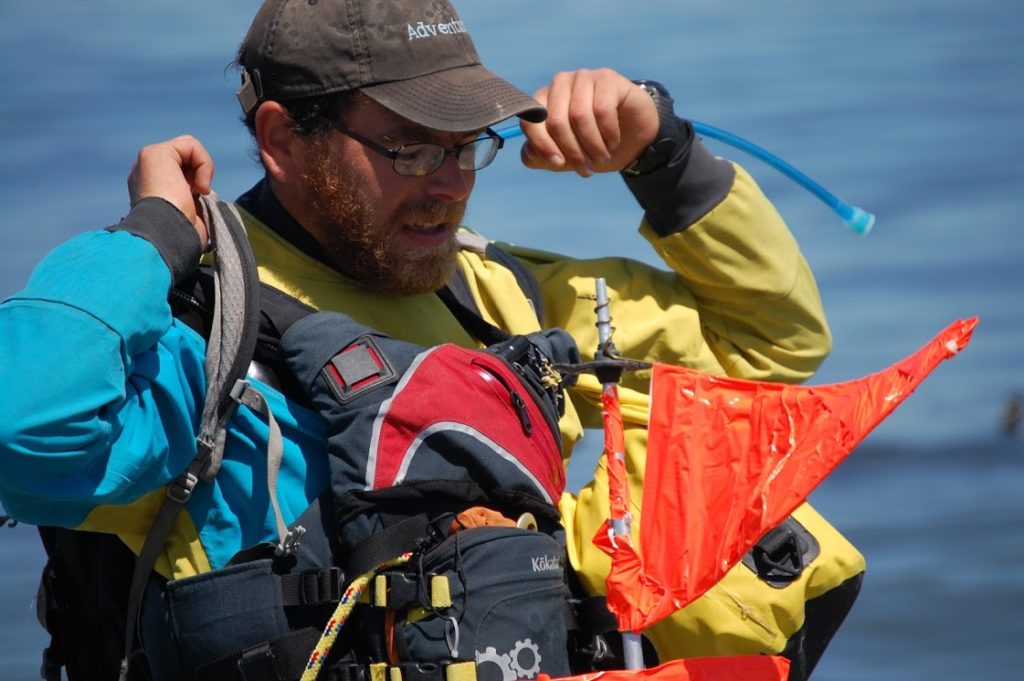
I paddled a slow loop around the bull kelp and then I pointed my bow northwest.
There water was glassy smooth. I paddled with my sprayskirt off so that I could vent heat from the cockpit. I paddled with fast, light strokes out into the open water.
About a half-mile out, I found an enormous stipe of bull kelp from last year, lolling on the surface like a rotting anaconda. I grabbed hold and broke two feet off the end of the tube, grimaced, and bit a hole in the top end. I lifted my new bugle to my lips and blew out a loud note: “Heeyaaaaawhnk!” It was about as loud as a ship’s horn and would be another way I could make my presence known on the Strait.
For the first miles of paddling I kept my eyes trained on Canada, occasionally looking left and right to watch for ships. I saw one cargo ship moving in from the east, but was comfortable that it would pass well in front of me.
Later, I passed within two miles of a large container ship, and cut about four miles in front of another one. There were a couple smaller boats out there also, but none got uncomfortably close.
I set my course toward a small white point on shore that turned out to be the lighthouse at Race Rocks. When I got there, I would have gone past the southernmost point of Vancouver Island and halfway to Victoria. I would keep well away from the rocks though; the area was known for dangerous currents.
Meanwhile, my kayak began to undulate up and down in four-foot swells. I swung my boat around rough patches where the water danced in swirls and sharp little ridges. The swells were still too round to crash over the front deck, but I worried that I would get nauseous if I stayed out in them too long. After about half an hour, the water smoothed again.
I was starting to see the Canadian coast in better definition: gently rolling hills, populated by pines.
I heard a short puff of breath, and looked to my left to watch a harbor porpoise roll out of the water. A second later, its companion popped up behind it.
“You are so awesome!” I declared. The porpoises went back under, but reemerged a moment later.
15 minutes went by, and then I saw another pair of porpoises come up to breathe on the other side, blowing out their puffs of air.
My nervousness about the trip began to subside, and I paddled with confidence.
I passed by Race Rocks without incident and started turning the boat more to the east so that I could take advantage of the flood tide.
Seeing no other large ships coming out of Victoria harbor, I decided not to worry as much about the shipping lanes. A buoy nearby revealed that the current was already flowing in my favor. I took a break to eat some food I’d squirreled away into my fanny pack as I cruised toward the final destination.
A large cruise ship marked the harbor entrance. A sharp current was moving into the harbor now and I swung quickly past a group of people hanging out on the jetty nearby.
The place was busy. There was a whole neighborhood of houseboats moored on some nearby piers. Tiny yellow taxi boats took people back and forth across the harbor while sea planes landed in and out. People on pleasure cruisers played tunes and lounged in board shorts and bikinis. I felt like a spaceman in my drysuit, out of place as usual.
Well, I was an alien here after all. I was legally obliged to report my presence as a foreign visitor to the local authorities. I tied up at the dock in Raymur Marina where there was a courtesy phone and a number to call Customs. I read out my passport number to one of the officials, announced my plans and received my own special number that indicated I had permission to be in Canada. That was it.
I sat down on the dock with an orange, watching a woman lead a kayak paddling class. The snowy reaches of the Olympic Mountains rose up above the buildings. I was starting to like this place. It would have to be a brief visit though.
I had about 20 minutes to enjoy paddling before I needed to haul my boat up and get to U.S. Customs at the ferry terminal so I could make the return journey.
The harbor went through a sharp narrows before it opened up again into the downtown. I flew through on the current.
The really tricky part was figuring out how to get my boat up to the ferry terminal. The only public docks in the harbor were a good distance away and metal retaining walls around the harbor cut off access.
The best way I could find to get on shore was a small park where I could get out of the water and lift my boat over a jumble of rocks. Two Canadians helped me out.
“Holy shit man!” one of them exclaimed when I told him where I’d come from.
They asked me how long it took me to get across the Strait, and I figured it was just about four and a half hours.
“That’s faster than the sailers make it sometimes,” one of them remarked.
Unfortunately, my awesome kayak is a lot less of a swift machine when it is out of water.
I was still nowhere near the ferry terminal and had to walk with my kayak and its radar reflector for about a quarter mile of busy sidewalk to get to the ticket booth and when I got there my spine was killing me.
Going through customs with my kayak was nowhere near as scary as I had worried — no one checked the hatches for contraband maple syrup or hockey pucks. But I still had to wait 90 minutes to get on board the ferry back to the States.
One of the customs guys was a kayak fisherman and we talked for a while about our boating experiences.
I watched a tractor trailer get off the ferry and cut the corner a little too close around the customs pavilion. Crunch! Several pieces of board fell to the asphalt and a bunch of government employees went to chat with the driver while others took photos of the scene.
Poor bastard.
And poor me. I had to pick the kayak up and bring it back onto the ferry.
I went above decks and watched as the boat pulled out of Victoria Harbour. I paced around the deck in my spaceman suit, making note of different landmarks I would want to remember for the Race To Alaska finish.
Eventually I went downstairs for a victory beer. The greater challenge still lies ahead.
Victoria, it was a good visit, if a short one. Hope to see you again soon!
